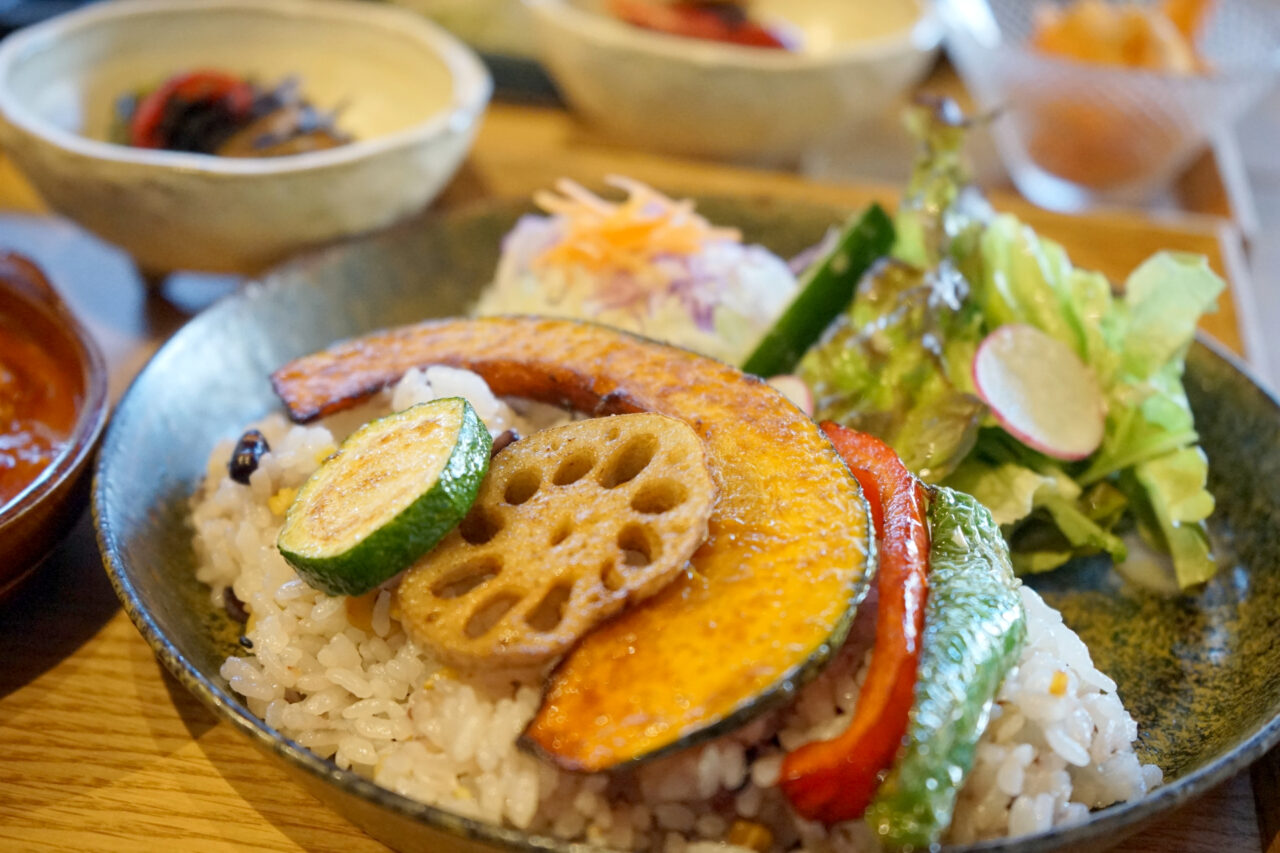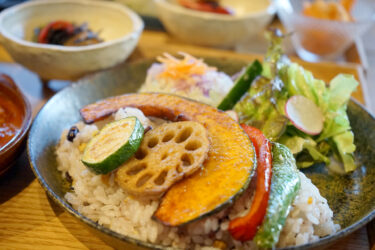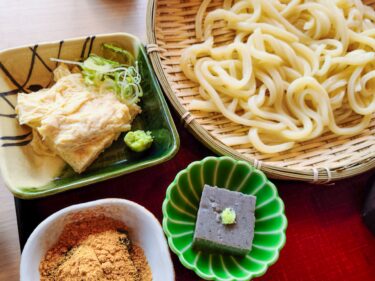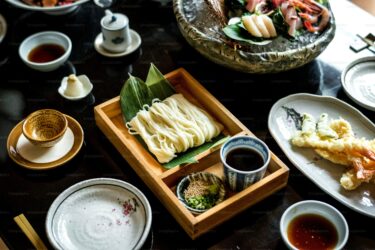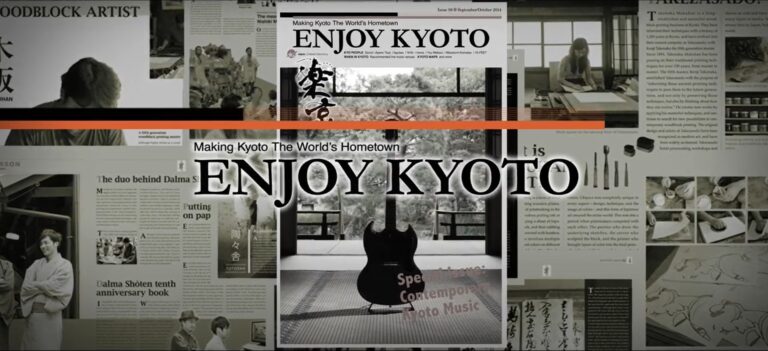Kyoto’s rich culinary scene makes it a paradise for food lovers, but vegans and vegetarians can struggle to find foods made without meat- or fish-based ingredients. In recent years, though, Kyoto’s vegetarian offerings have become much more diverse, with multiple options for plant-based dining, and even vegan ramen. Kyoto is known for its vegetables, so it may not be so surprising that this is the city that knows how to make them shine.
Traditional Kyoto-Style Vegetarian Dining
Shojin Ryori (Traditional Buddhist Cuisine)
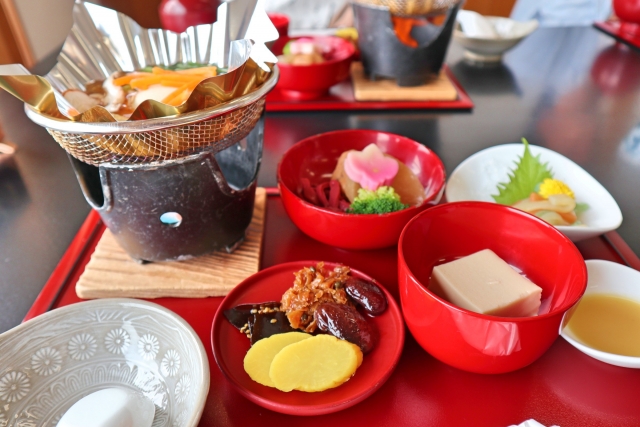
When it comes to vegetarian dining in Kyoto, shojin ryori is where it all begins. This ancient style of cooking comes from Zen monasteries that followed Buddhist teachings against taking a life. Instead, shojin ryori meals are simple and delicious, typically made using tofu, fresh vegetables, seaweed, and rice, and prepared to highlight their natural flavors. Even now, shojin ryori isn’t eaten much outside of temple settings, and if you want to try some in Kyoto, that’s where you’ll need to go to find it.
These restaurants, for example, operate just outside of temples, serving shojin ryori to the general public. Just be aware that these special meals are usually slightly pricier than non-shojin ryori fare.
Ajiro (Myoshin-ji Temple): Located just outside the serene grounds of Myoshin-ji Temple, Ajiro is a highly respected restaurant known for its meticulously prepared shojin ryori sets. The dishes here are elegantly presented and crafted to highlight the natural tastes of seasonal vegetables.
Shigetsu (Tenryu-ji Temple): This restaurant is set within the grounds of picturesque Tenryu-ji Temple in Arashiyama, so you can not only enjoy a beautifully simple shojin ryori meal of small, carefully-prepared dishes, you can look out on the temple’s tranquil gardens while you eat. See Shigestu’s English language website here.
Yudofu (Boiled Tofu Dishes)

Yudofu, a traditional Kyoto delicacy, is another great option for vegetarians. This humble dish has a connection to Kyoto’s temples, too, dating back to the days when tofu was a dietary staple of Buddhist monks. Yudofu dishes are made by boiling silken tofu in a light broth and serving it with a variety of dipping sauces. But this isn’t your average tofu: it’s rich and smooth, and unlikely to taste like any tofu you’ve had before.
Nanzenji Junsei: Situated near the historic Nanzen-ji Temple, Nanzenji Junsei knows their tofu. The restaurant serves exquisite yudofu dishes in a traditional setting that looks out over a beautiful traditional garden. Whether or not you think you like tofu, this is the place to taste tofu or yuba (soymilk skin) at their best. See Nanzenji Junsei’s English-language website here.
Casual Vegetarian Restaurants
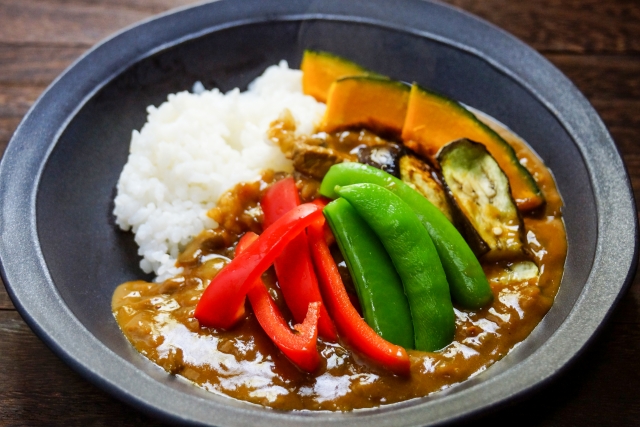
Kyoto is also home to a number of vegetarian- and even vegan-friendly restaurants that fuse modern Japanese and Western-style cooking. If temple cooking is a bit much for you, these restaurants offer a more casual atmosphere, and some truly delicious eats.
Mumokuteki Café & Foods: This café is known for its healthy take on Japanese cuisine. With a focus on fresh, organic ingredients, Mumokuteki serves beautifully plated vegetarian and vegan dishes, including brown rice bowls, salads, and tofu-based dishes, all in a chic interior. Just be sure to get there early – lines tend to form quickly here!
Vegan Restaurant F: As the name implies, this fusion restaurant is a safe bet for vegan diners. Vegan Restaurant F serves a variety of dishes like curry, pastas, and even vegan cheese plates. The presentation is both elegant and creative, perfect if you’re looking for some refined vegan fare. Dinners are reservation-only. You can find some English information on Vegan Restaurant F’s website.
Vegan Ramen UZU: Yes, you can even find vegan ramen in Kyoto! Not only that, but at Vegan Ramen UZU, you’ll feel like you’re dining in a modern art museum with dramatic lighting and artwork by teamLab, the team behind popular interactive installations in Tokyo and across Japan. See Vegan Ramen Uzu Kyoto’s English language website here.
ITADAKIZEN KYOTO: This cozy Japanese vegan restaurant focuses on natural, organic ingredients and has locations in Paris and London as well. ITADAKIZEN’s offerings include traditional dishes like sushi and noodles, all prepared in a vegan-friendly way. See ITADAKIZEN KYOTO’s multilingual website here.
International Vegetarian Cuisine
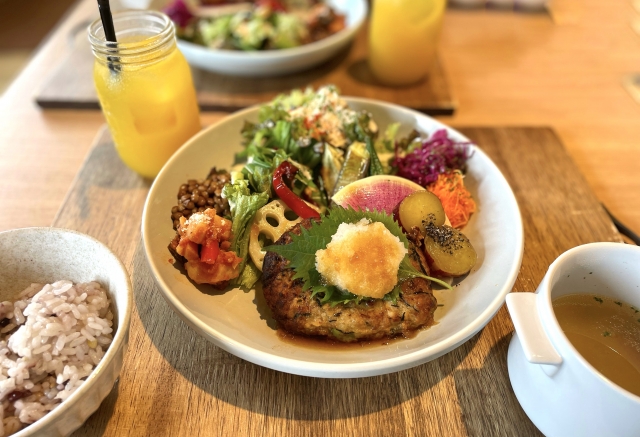
In addition to traditional Japanese dining, Kyoto boasts a growing selection of more Western-style restaurants that cater to vegetarians. If you want a break from local dishes, these are some great options.
Ain Soph. Journey Kyoto: Ain Soph. Journey offers a range of vegan dishes, including hearty burgers, pancakes, and rice bowls. Ain Soph. has several locations across Japan, and its Kyoto branch has a particularly cozy, rustic feel. See Ain Soph. Journey Kyoto’s English language website here.
Veg Out: Located along the Kamogawa River, Veg Out is a popular spot for a relaxing meal with a view. The café offers an assortment of plant-based dishes, from colorful salads to tasty curries. See Veg Out’s multilingual website here.
ZIRAEL Vegan Restaurant: ZIRAEL’s menu focuses on Kyoto’s local vegetables, something the city is known for nationwide. The restaurant also sells other vegan items, like cosmetics. See ZIRAEL’s English-language website here.
Choice Café: Choice Café serves a variety of vegan dishes, including dairy-free cheese plates, pasta dishes, plant-based burgers and pancakes… not to mention desserts like chocolate cake and cheesecake!
Tips for Finding Vegetarian Meals in Kyoto
While Kyoto has a growing number of vegetarian options, it can still be challenging to navigate menus and find vegetarian-friendly dishes, and . Here are a few tips to help:
Use HappyCow for Reference: HappyCow is a site that provides detailed reviews and directions to restaurants across not only Kyoto, but other cities in Japan, with useful information about whether their offerings are vegan or vegetarian-friendly.
Remember Some Japanese Phrases: It may be helpful to know a few phrases to communicate your dietary preferences to a server if they don’t speak English, such as “Watashi wa niku to sakana wo tabemasen” (I don’t eat meat or fish). Just be aware that most non-vegan or vegetarian restaurants in Japan may not be prepared to accommodate this kind of dietary need, and may not even be aware of all the animal-based ingredients in their cooking. Dashi (a fish-based soup stock), for example, is used broadly in Japanese cooking. If you’re unsure, you may want to ask if a dish contains dashi: “Kochira ni dashi wa hai te i masuka?” (Is there dashi in this?).
You might not expect to find so many vegetarian restaurants in a traditional city like Kyoto, but here, the city’s fusion of the modern and the traditional shines, bringing travelers options for everything from plant-based burgers, to rich vegan ramen, to delicate Buddhist temple cuisine. And while you’re in Kyoto, why not sample them all?

